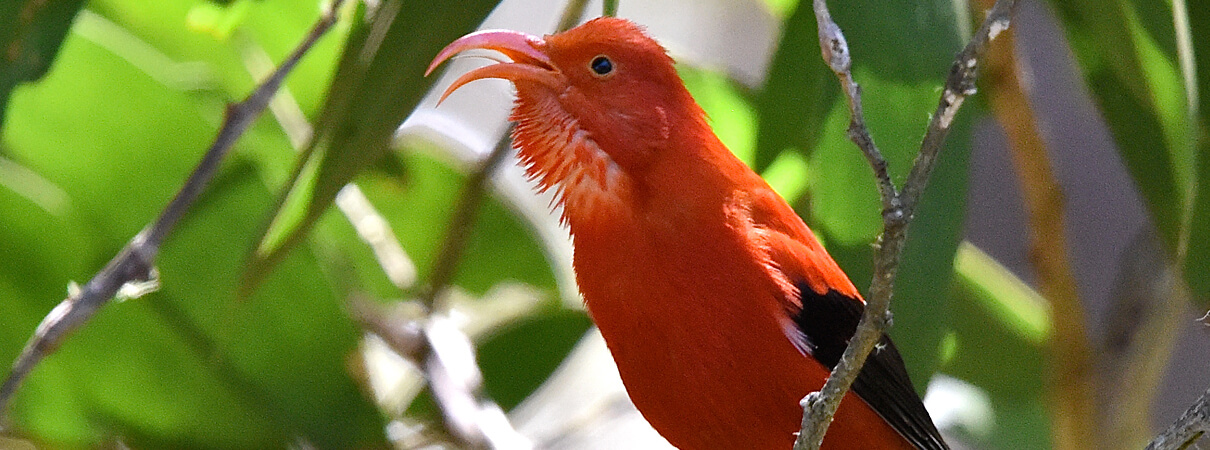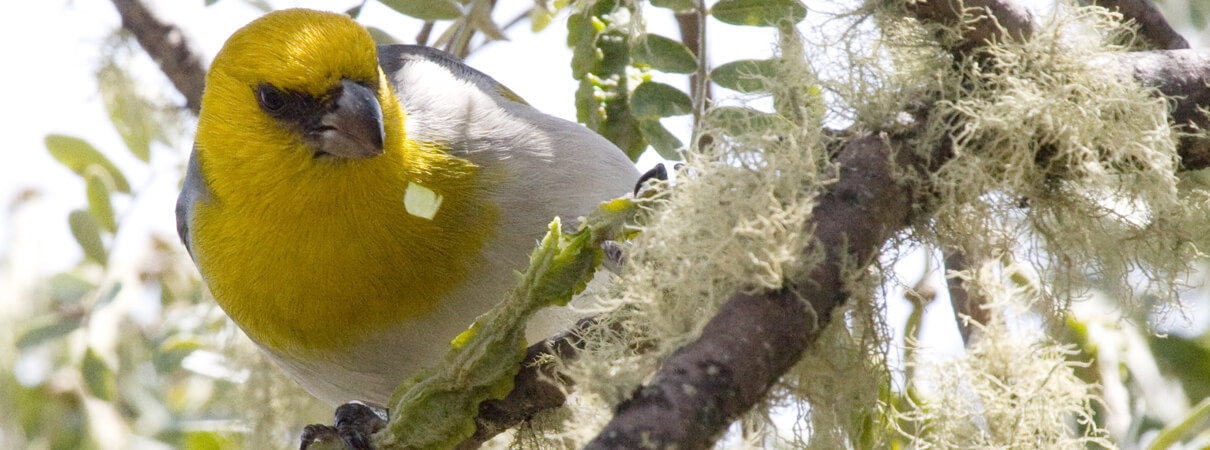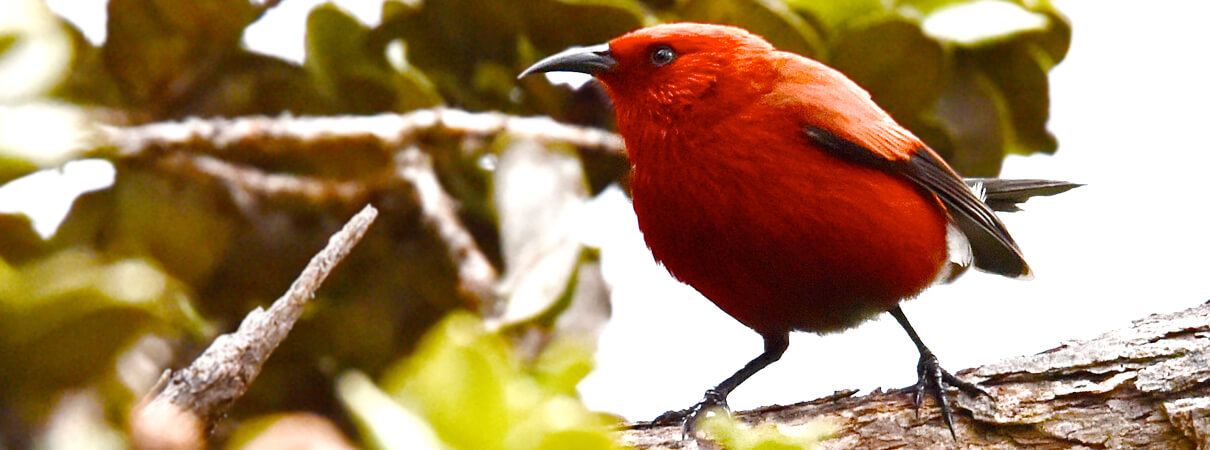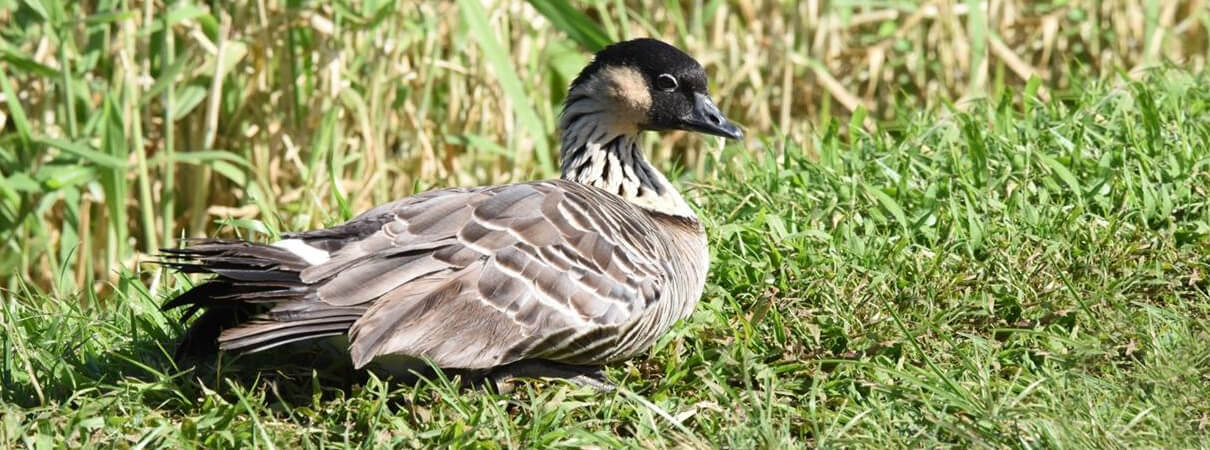ABC is Hard at Work to Save Native Hawaiian Birds
Mark Twain wrote in Letters from Hawaii that during his 1866 visit to the islands, "I saw cats—Tom cats, Mary Ann cats, long-tailed cats, bobtail cats…platoons of cats, companies of cats, regiments of cats, armies of cats, multitudes of cats, millions of cats…." It is also said that a single feathered cape for a Hawaiian king required 30,000 feathers of the ‘I‘iwi, a beautiful native Hawaiian honeycreeper reminiscent of the Scarlet Tanager.

I'iwi by Warren Cooke
These two reports are emblematic of the vast damage inflicted on native Hawaiian birds by human-introduced factors. Include predation by non-native rats and mongooses; uncontrolled grazing by feral pigs, sheep, deer, and goats; and throw in recent drought, and you begin to see why Hawai‘i's beautiful native birds are in very serious trouble.
Global climate change further compounds the problems by allowing mosquitoes that transmit avian malaria—devastating to the native honeycreepers because they have no resistance—further up the sides of Hawai‘i's volcanic mountains to the few remaining protected areas. There are some nice birds to be seen around Honolulu's parks, such as the Java Sparrow and the Japanese White-Eye, but they are mostly introduced exotics, not natives.

Java Sparrows, Chesapeake Images/Shutterstock
In the 20th century, at least 23 native Hawaiian birds became extinct; most of the rest are in jeopardy. American Bird Conservancy (ABC) is hard at work on the ground in Hawai‘i, in cooperation with other conservation organizations, to save what remains.
In February my wife, Cathy, and I visited Hawai‘i with ABC Board member Shoaib Tareen and his wife, Cathy Filgas, and ABC Board member Kay Hale, together with ABC friends and supporters Sandy and Tom Nissley and Judy Boyce. We saw the challenges—and what ABC and its partners are doing to fight them.
Solutions for Seabirds and Honeycreepers
One threatened Hawaiian bird is the Laysan Albatross, a spectacular bird that soars far and wide on a six-foot wingspan and nests on open grassy or sandy areas near the sea. As ground-nesters, albatrosses and their chicks are vulnerable to feral cats, rats, and mice, among other destructive predators. To provide much-needed protection, ABC is installing predator-proof fences in important breeding areas.

Laysan Albatross by Warren Cooke
The Laysan Albatross is also vulnerable to military operations: one of its nesting places is now near runways at the U.S. Navy's Pacific Missile Range Facility on Kaua‘i. The Navy is authorized to eliminate the nests to protect aviation there. To its immense credit, rather than destroying the birds the Navy is providing significant assistance to Pacific Rim Conservation and its partners, including ABC, to relocate albatross eggs to James Campbell National Wildlife Refuge on O‘ahu. The refuge is safe from predators (due to fencing and trapping) and removed from military activities. The relocation process is lengthy and complex, but there is good reason to believe it is working.
The Palila, a beautiful golden-headed and pearl gray-backed bird, is a native Hawaiian songbird that is down to 5 percent of its original range. It is now found only on the upper slopes of Mauna Kea volcano. In addition to severe drought, the culprits in the bird's steep decline over the last 20 years include human-introduced predators such as feral cats, and non-native sheep and goats that continually ruin the habitat that is crucial for the Palila, such as saplings of the mamane tree on which it depends. In partnership with the state's Mauna Kea Forest Restoration Project, ABC is battling these threats, among other things through fencing and the restoration of habitat in and near Palila territory.

Palila by Robby Kohley
Taking a Stand for Hawaiian Birds
A number of other beautiful Hawaiian birds are still to be found in the moist montane forests at high elevations, such as the ‘Apapane, Hawai‘i ‘Amakihi, and Hawai‘i ‘Akepa. But all face serious challenges, threatened by human-introduced predators such as rats, which are found on the ground and in the trees. We saw rat-control efforts under way by ABC in cooperation with the Kaua'i Forest Bird Recovery Project, with funding from the National Fish and Wildlife Foundation and other organizations and individuals.

‘Apapane by Warren Cooke
Even Hawai‘i's State bird, the Nene (Hawaiian Goose) is seriously threatened by cats and other non-native predators.
Chris Farmer is ABC's Hawai‘i Program Director and led our group on the visit, together with George Wallace, ABC's Vice President for Oceans and Islands; and Ryan Trachtenberg, a development officer with ABC. Through science and heroic determination, they are making a positive difference to Hawaiian birds in this difficult situation.

Nene by Warren Cooke
In his essay "The Star Thrower," Loren Eiseley wrote of an old man who saw a boy throwing starfish from a beach back into the ocean, and asked the boy what he was doing. The boy replied, "Saving the starfish." The man said, "Your attempts are useless, child!…You can't save them all, so why bother trying? Why does it matter, anyway?"
"The boy thought about this for a while, a starfish in his hand,” Eiseley wrote. “He answered, 'Well, it matters to this one.' And then he flung the starfish into the welcoming sea."
And we know that ABC does not give up.
 Warren Cooke is the Chair of American Bird Conservancy's Board of Directors and has been a birder for over 40 years. He is a retired partner of the Global Finance Department of the international law firm Milbank, Tweed, Hadley & McCloy LLP, where he was engaged primarily in domestic and international finance. He is a graduate of Dartmouth College and Yale Law School. Warren is a member of the Board of Trustees of Valley Health Systems as well as Valley Medical Group, and is a Trustee of The Nature Conservancy of New Jersey and of Parlance Chamber Concerts, Inc.
Warren Cooke is the Chair of American Bird Conservancy's Board of Directors and has been a birder for over 40 years. He is a retired partner of the Global Finance Department of the international law firm Milbank, Tweed, Hadley & McCloy LLP, where he was engaged primarily in domestic and international finance. He is a graduate of Dartmouth College and Yale Law School. Warren is a member of the Board of Trustees of Valley Health Systems as well as Valley Medical Group, and is a Trustee of The Nature Conservancy of New Jersey and of Parlance Chamber Concerts, Inc.


















































